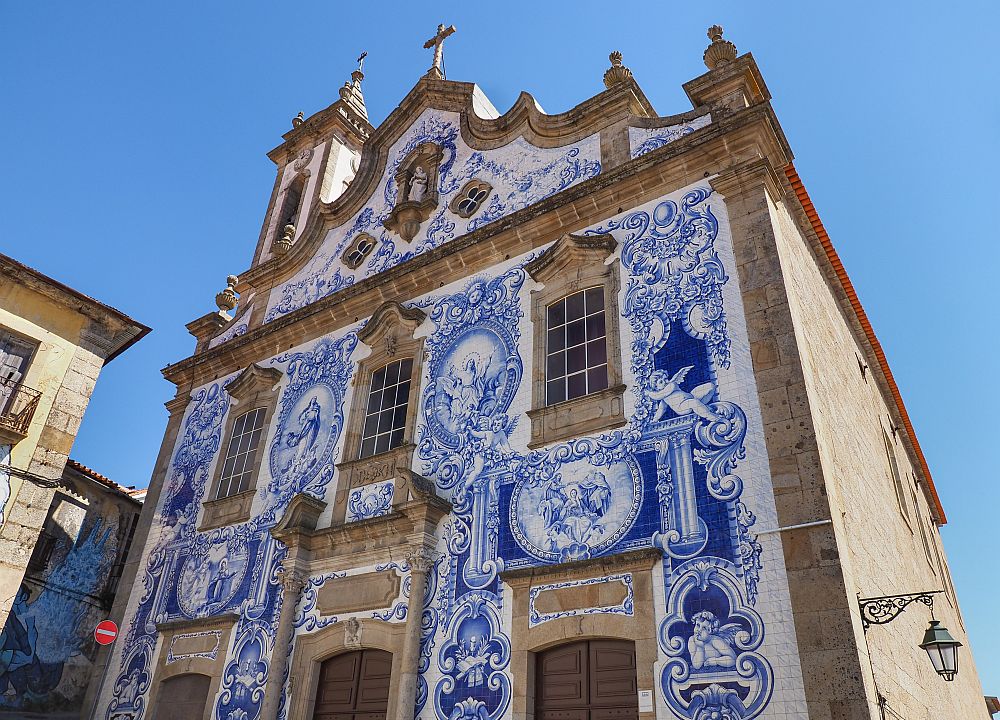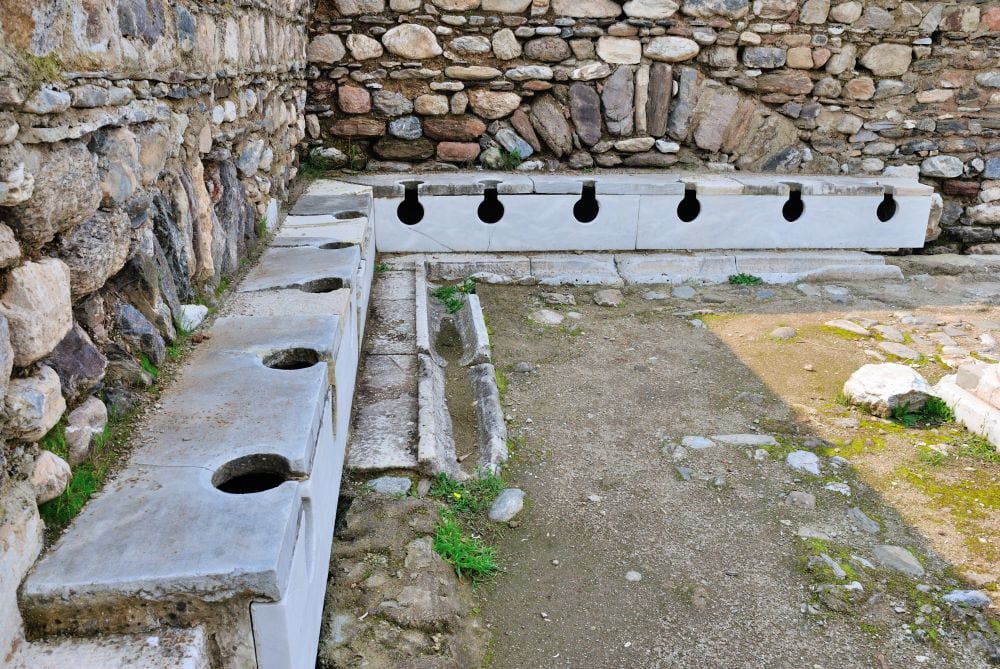
[Image above] The Cathedral of Brasília in Brazil features an expansive stained-glass work by artist Marianne Peretti. Created in 1990, the windows cover 22,000 square feet and give the appearance of waves. Credit: Cayambe, Wikimedia Commons (CC BY-SA 3.0)
“Even today, many are unable to resist the lure of this fascinating medium [stained glass].”
– Xavier Barral i Altet, Stained Glass: Masterpieces of the Modern Era
This month, we at CTT have been tracing the history of stained glass through a special three-part series published every other Tuesday. The first part, available here, described the techniques used to create stained glass, while the second part, available here, overviewed the early history of stained glass up until the 16th century. The third part, which you are reading now, covers the revival of stained glass in the 19th and 20th centuries and its use today.
I hope you enjoy the third and final part of our stained-glass series.
Revival of stained glass in the 19th and 20th centuries
Several art movements during the 19th and 20th centuries popularized stained-glass windows in homes and commercial spaces.
The Romanticism era, which occurred during the first half of the 19th century, emphasized the individual, the imaginative, and a deepened appreciation of the beauties of nature. This emphasis led to an almost obsessive interest in folk culture and the medieval era, which subsequently revived interest in stained glass.
Stained-glass artists answered this demand with both reproductions of medieval artwork and new designs in the medieval style. More churches were also built in the Gothic style, bringing back elaborate stained-glass windows depicting scenes from the Bible and other religious images.
Figural images, or images that depict people, previously dominated window design for four centuries. These images emerged again in the 19th century with the revival of Gothic architecture in Europe. However, religious figures were often replaced with those of artists and/or patrons, as well as renowned scientists, such as the astronomer Galileo and mathematician George Boole. Meanwhile, in the United States, glass studios promoted 13th and 14th century styles.
The Arts and Crafts and Art Nouveau movements shortly followed the Gothic Revival in Europe. These artistic movements emphasized natural forms, light, and organic colors, as well as plant motifs. Stained glass was an ideal medium for these art styles.
U.S. artist and designer Louis Comfort Tiffany, mentioned in Part 1 of this series for his development of the copper foil construction method, played a significant role in these movements with his stained-glass products. His famous Tiffany glass products gained notice on a global stage thanks in part to a collaboration with German-French art dealer Samuel Siegfried Bing, whose Salon de l’Art Nouveau in Paris was the source of the Art Nouveau movement’s name.
U.S. artist John La Farge also had a large influence on stained-glass design during this period. His invention of the opalescent stained-glass window (patented in 1880), which Tiffany later improved upon as detailed in Part 1, led art historian Virginia Chieffo Raguin to dub 1880 to 1920 the “opalescent era” in her book Stained Glass: From Its Origins to the Present.
Some of La Farge’s and Tiffany’s major works are at the Worcester Art Museum in Massachusetts. St. Paul’s Episcopal Church in Englewood, N.J., also features windows by these two men, as well as by U.S. artist Margaret Redmond.

Examples of the opalescent stained-glass windows pioneered by U.S. artist John La Farge. These windows, named Morning and Evening, respectively, date to 1881. Credit: Wikimedia Commons, public domain
Several women of this generation took advantage of the stained-glass techniques pioneered by La Farge and Tiffany. For example, Helen Maitland Armstrong, daughter of Tiffany-trained stained-glass artist David Maitland Armstrong, became a partner in her father’s firm and started designing windows as early as 1894. One of her designs is now in the Metropolitan Museum of Art. The sisters Lydia Field Emmet and Rosina Emmet Sherwood also made use of these new techniques.
Another important U.S. manufacturer of stained-glass windows was Kokomo Opalescent Glass, established in 1888. The company specialized in one-of-a-kind sheets of art glass, selling to both Tiffany and other glass studios. It is still in business today and now produces a wide range of products.
The stained-glass revival story would not be complete without mention of Frank Lloyd Wright. From 1886 to 1933, he designed around 150 houses that incorporated leaded or stained glass. In 1954, Wright used stained glass in the Danforth Chapel at Florida Southern College.
Wright was influenced by his mentor, Chicago-based and renowned architect Louis Sullivan, who he worked with for six years and who incorporated stained-glass windows in many buildings (see photo below). Wright’s designs featured straight parallel lines and small squares in repeated patterns. Like Sullivan, Wright designed glass as an integral component of architecture.

Example of Louis Sullivan’s stained-glass work. This piece was originally installed in the Auditorium Building in Chicago, Ill. Credit: Andre Carrotflower, Wikimedia Commons (CC BY-SA 4.0)
In 1910, the Gothic Revival that had started in Europe made its way to the U.S. The resulting preference for medieval designs, along with the Art Deco movement in the 1920s and 1930s, led Tiffany Studios to file for bankruptcy in 1933, shortly before its founder died.
These movements inspired some artists, such as Charles Jay Connick, author of Adventures in Light and Color, to come up with their own medieval designs, as shown in this example. Other U.S. colleges and universities also adopted the Gothic Revival style as they expanded.
The 20th century witnessed the major loss of some iconic stained-glass windows because many European churches were destroyed during the two world wars. The silver lining of these two events was the reconstruction and redecoration of damaged churches. New religious buildings were also commissioned. Renowned French artists such as Henri Matisse and Jacques Le Chevalier played major roles in the revival of stained glass after WWII.
During the 1960s, as churches devoted more of their resources to social issues, stained-glass windows became a popular hobby. In Europe, new churches featured open-floor plans and geometric stained-glass windows. U.S. artist Shirley Jaffe used geometric designs for her windows in the La Funeraria chapel in Spain. Portuguese artist Maria Helena Vieira da Silva also used this style for stained-glass windows in the Church Of St Jacques in Reims, France.

Examples of Shirley Jaffe’s geometric designs in the stained-glass windows at La Funeraria chapel. Credit: MARCHESAN PASCALE – MAIRIE DE PERPIGNAN, Wikimedia Commons (CC BY-SA 4.0)
This period also witnessed an expansion in stained-glass windows being used for secular buildings. This expansion included leisure places, such as restaurants, concert halls, and department stores, and also places of work, such as warehouses, factories, and railway stations.
The establishment of the Toledo Museum of Art in Ohio in 1962 helped launch the studio glass movement in the U.S. Figural designs also took a modern twist: for example, U.S. artist Judith Schaechter mimicked the German Expressionist tradition in her pieces.
Advancing stained glass through collaborations and cooperation
Throughout the history of stained glass, collaboration in the community has been key to advancing the spread and acceptance of this artform. Some examples of these formative collaborations are below.
Tiffany Glass and Decorating Company, which later became Tiffany Studios, required teams of talented designers and craftspeople to translate Tiffany’s designs into beautiful objects. Several notable designers were women, including Lydia Emmet, Agnes Fairchild Northrop, Alice Carmen Gouvy, and Clara Driscoll (who supervised the Women’s Glass Cutting Department). The historical novel, The Tiffany Girls, mentions some of these women and describes how closely they worked together.
Irish painter Sarah Purser helped establish a cooperative stained-glass studio, An Túr Gloine, in 1903 that brought creative artists together. Another glass artist, Mary Lowndes, established her second stained-glass studio with her partner Afred Drury in 1906. Their studio became famous for its designs, which were influenced by the Arts and Crafts movement.
In 1919, the Sacred Art Studio in Paris was founded, where artists from different disciplines met. The gatherings at this studio led to Marguerite Huré’s collaboration with co-founder Maurie Denis at a church in 1923, one of the first examples of abstract stained glass in a religious context.
During the post-war reconstruction of Germany and its many churches, close collaboration between architects and glaziers was required. Later in the 20th century, collaboration across national boundaries was established when The Pilchuck Glass School in Washington state opened its doors to international artists.
Renowned glass artists such as Linda Lichtman taught at the Pilchuck school. Another stained-glass educator was Canadian artist Yvonne Williams, who viewed the creation of stained glass as a “partnership with the sun.” Many of the apprentices who studied in William’s studio followed in her footsteps and became well-known Canadian glass artists.

Portrait of Canadian artist Yvonne Williams. She was known for her design and creation of stained-glass windows in Canada, including the windows in St. John’s Shaughnessy in Vancouver, Chalmers United Church in Guelph, and St. Michael & All Angels Church in Toronto. Credit: The City Sunday Star, public domain

Stained-glass window featuring the Nativity, created by artist Yvonne Williams in 1942. This work was reproduced in a series of Christmas stamps issued in 1976. Credit: Canadian Museum of History
The National Ornamental Glass Manufacturers Association, now The Stained Glass Association of America (SGAA), was organized in July 1903 at the Southern Hotel in Columbus, Ohio. Although originally established to protect the ornamental and stained-glass industry in the United States from cheaper European glass imports, the association grew to include all architectural glass arts. Collaboration became a key ingredient for SGAA, as stated in one of their goals: “To promulgate friendship and understanding among the craftsmen themselves.”
At the 75th Anniversary Convention of SGAA, Helen Hickman became the first woman president as well as the first artist designer to be elected as president. Later, other women artists were elected president, including Elizabeth Perry, who cited SGAA as the “cohesive factor that promotes business relationships, supports our continuing education, and provides a forum to deal with problems and questions that arise in the industry.”
In 1953, New Work in Stained Glass was organized as a cooperative effort between SGAA and the American Federation of Arts (AFA), which was reviewed in several major publications.
Stained Glass, USA; New Directions was another joint effort of SGAA and the AFA, organized with the sponsorship of the United States Information Agency for Latin America. Comprised of the 18 panels from the New Look Show, along with actual panels and sketches provided by several SGAA studios, this exhibit traveled to six cities across Latin America during 1957 and 1958.
The International Year of Glass in 2022 also inspired new collaborations. When SGAA held its annual conference in Toledo, Ohio, it was the first time in its conference history that SGGA worked with companies such as Pilkington and O-I Glass to support the conference. This conference was also held in conjunction with the Society of American Mosaic Artists (SAMA) to explore how the two organizations could work together to achieve their goals. The Seven Pillars of Humanity, a major work of glass art, was also exhibited.
Another event held later that year in Readsboro, Vt., involved a diverse group from the glass art, museum, science, and technology communities. This collaboration would not have been possible if the group had not first met at the Day of Glass in April 2022 in Washington, D.C., sponsored by The American Ceramic Society. The video below recaps the results of this collaboration.

Credit: The Stained Glass Association of America, YouTube
Stained glass can also serve as a valuable tool for scientists. For example, as discussed in the May 2016 ACerS Bulletin cover story, scientists partnered with archeologists, museum curators, and geologists to identify and examine ancient glass artifacts, including stained-glass pieces, to help predict the durability of vitrified nuclear waste.
Despite the ebbs and flows in popularity, stained glass remains an integral part of our society in both architecture and consumer products, such as jewelry and suncatchers. It is the focus of countless workshops each year, and many museums offer visitors the opportunity to learn more about this artform through their exhibits and resources. There is even an entire museum devoted to this subject in the U.K.!
Taking all this information into account, I can confidently say that stained glass is here to stay.
Tracking the history of stained glass through the ACerS Bulletin
As the archival record of The American Ceramic Society, the ACerS Bulletin serves as a record of the evolution and development of the ceramic and glass industry over the last 100+ years. Within this expansive archive, glimpses into the stained-glass industry can be gathered from articles, notices, and profiles published in various issues over the decades.
Below are some examples of stained-glass stories that you can find within the ACerS Bulletin. ACerS members gain access to all past issues of the ACerS Bulletin through bulletin.ceramics.org, so consider joining as a member today!
- August 1924: The Society of Glass Technology summarized several talks on the decay of stained glass that were presented during a meeting at University College London.
- June 1936: Lawrence Bradford Saint, a stained-glass artist known for his work on Washington’s National Cathedral, published a creed to encourage a higher standard of quality for stained-glass windows.
- November 1936: Stained-glass artist Lawrence Bradford Saint published an article sharing his decades of knowledge concerning stained glass to help prevent this artform from becoming a lost art.
- August 1939: In the Seventh Annual Edward Orton, Jr., Memorial Lecture, recipient Lawrence E. Barringer notes that “Although the field for stained glass is relatively not large, there is no branch of ceramic art that requires a greater degree of originality and skill.”
- August 1957: Liturgical artist and stained-glass designer Robert E. Rambusch published an article on how stained glass, traditionally considered a craft of the Middle Ages, “will continue to be the handmaid of architecture.”
- April 2022: As part of the International Year of Glass celebrations, American Glass Guild president Kathy Jordan wrote a column summarizing the Guild’s recent initiatives and programs.
Further reading
Books
- Stained Glass: From Its Origins to the Present, by Virginia Chieffo Raguin
- The Art of Stained and Painted Glass, by Alfred Werck
- Stained Glass: Masterpieces of the Modern Era, by Xavier Barral i Altet
- Stained Glass in America, by John Gilbert Lloyd
Online resources
- Stunning stained glass: Follow the Tiffany glass trail in PA
- Found stained-glass window raises questions about New England’s history and slavery
- Through a Glass Darkly: Baltimore’s Stained-Glass Makers: Exhibition at The Peale –Baltimore’s Community Museum
We also thank The Stained Glass Association of America for the insightful and educational content featured on its website.
Author
Laurel Sheppard
CTT Categories
- Art & Archaeology
- Education
- Glass


